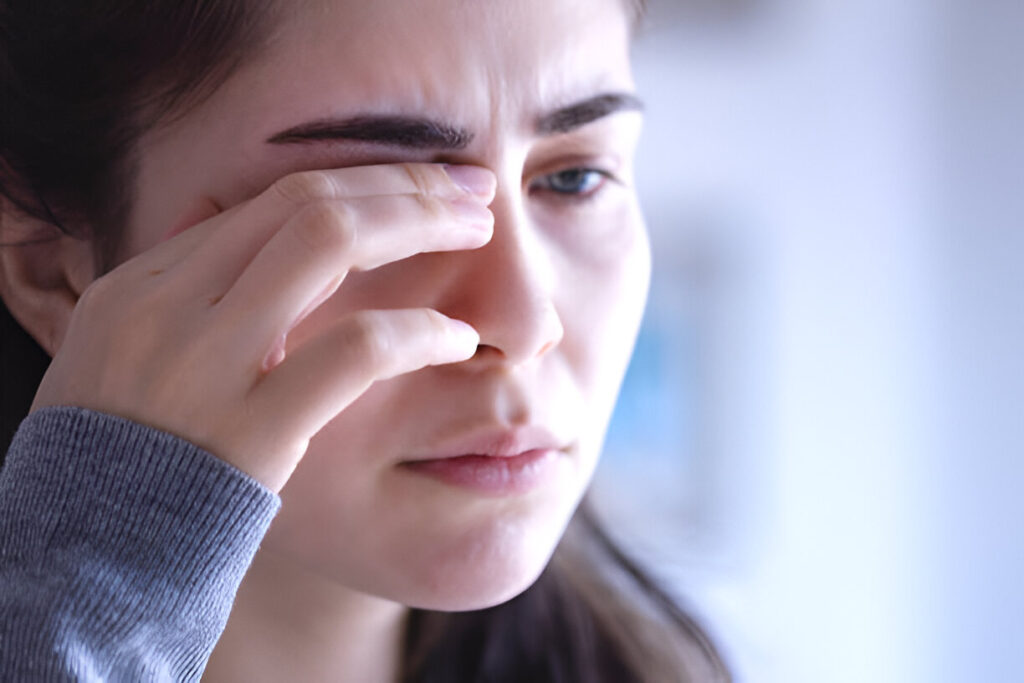Contents
- 1 Key Takeaways:
- 2 Table of Contents
- 3 Introduction
- 4 Common Causes of Dry Eyes
- 5 Signs and Symptoms to Watch For
- 6 Lifestyle Changes to Mitigate Symptoms
- 7 Over-the-Counter and Prescription Treatments
- 8 When to Seek Professional Help
- 9 The Role of Technology in Managing Dry Eyes
- 10 Resources and Support for Dry Eye Sufferers
Key Takeaways:
- Dry eye syndrome affects millions, but understanding its causes and remedies can greatly improve life quality.
- A combination of lifestyle changes and appropriate treatments can alleviate symptoms effectively.
- Early recognition and management are crucial to preventing severe complications of dry eyes.
Table of Contents
- Introduction
- Common Causes of Dry Eyes
- Signs and Symptoms to Watch For
- Lifestyle Changes to Mitigate Symptoms
- Over-the-Counter and Prescription Treatments
- When to Seek Professional Help
- The Role of Technology in Managing Dry Eyes
- Resources and Support for Dry Eye Sufferers
Introduction
In today’s fast-paced digital world, the discomfort of dry eye syndrome is becoming increasingly prevalent. This condition occurs when your tears can’t provide adequate lubrication for your eyes, affecting millions globally. Understanding the causes and seeking appropriate relief for dry eyes can significantly enhance the quality of life for those affected. Despite its commonality, dry eye syndrome is often overlooked until it interferes with everyday tasks like reading or using a computer.
Dry eye syndrome can manifest in various ways, from a persistent feeling of grit in the eyes to unrelenting burning sensations and even blurred vision. Those who experience it often struggle to maintain focus and comfort, particularly in environments with artificial lighting or air conditioning. The good news is that lifestyle tweaks and targeted treatments can effectively alleviate these symptoms. Thus, understanding this condition and learning how to manage it provides a foundation for improving eye health and overall well-being.
Common Causes of Dry Eyes
Several factors contribute to dry eye syndrome, making it a multifaceted issue. Environmental elements like air pollution, wind, and dry climates can exacerbate the condition. Age is also a significant factor, as tear production tends to decrease with aging, resulting in drier eyes. Hormonal changes, particularly in post-menopausal women, can also lead to decreased tear production, thus causing dry eyes. In our modern lifestyles, characterized by prolonged screen time, our blinking rate decreases, leading to increased evaporation of tears. Moreover, medical conditions such as diabetes, lupus, and rheumatoid arthritis can alter oil secretion balance and reduce tear film stability, increasing the risk of dry eyes.
Signs and Symptoms to Watch For
Being able to recognize the symptoms of dry eyes is crucial for timely intervention. Common indicators include persistent dryness, irritation, burning sensations, and fluctuating vision. Often, people experience a gritty sensation as if sand is continually in their eyes. In more severe cases, dry eyes can lead to increased sensitivity to light and difficulty with nighttime driving or wearing contact lenses. If left untreated, these symptoms can lead to more severe complications, including eye infections and damage to the corneal surface. Awareness and timely action can prevent the progression of these more serious issues.
Lifestyle Changes to Mitigate Symptoms
Mitigating dry eye symptoms often involves making a few lifestyle adjustments, which can serve as first-line strategies for managing the condition. Simple steps like increasing fluid intake to stay well-hydrated can help maintain adequate eye moisture levels. A balanced diet rich in omega-3 fatty acids from foods like fish, flaxseeds, and walnuts is beneficial as it may improve the composition of tears. Additionally, using a humidifier in living spaces, especially during the dry winter, can help counteract the drying effects of indoor heating. Avoiding smoke-filled environments and wearing wraparound sunglasses to protect against wind during outdoor activities can also provide significant relief. Furthermore, adopting the 20-20-20 rule—looking at something 20 feet away for 20 seconds every 20 minutes—can reduce digital eye strain and help maintain comfortable eye moisture levels.
Over-the-Counter and Prescription Treatments
While lifestyle modifications can substantially alleviate symptoms, some require additional intervention through over-the-counter or prescription treatments. Many find relief in artificial tears, gels, and ointments designed to mimic natural tears and provide lubrication for extended periods. The variety of products available allows individuals to choose the best fit for their symptoms and dryness. In more severe or persistent cases, prescription treatments may be necessary. For example, anti-inflammatory medications like cyclosporine can help increase tear production, and certain tear-stimulating drugs are also available. Consulting with healthcare providers can guide individuals toward appropriate treatments that fit their specific conditions and health history.
When to Seek Professional Help
Understanding when to consult with an eye care professional is critical to preventing long-term damage associated with untreated dry eyes. If over-the-counter options fail to provide relief, or if symptoms such as severe discomfort, redness, or vision changes worsen, seeking medical advice is necessary. Healthcare providers can conduct comprehensive tests, including tear film analysis and ocular surface examination, to determine the underlying cause. These evaluations help devise personalized treatment plans that address specific issues, potentially avoiding complications like chronic inflammation or scarring of the ocular surface.
The Role of Technology in Managing Dry Eyes
Innovation in medical technology is expanding the toolkit available to manage dry eye syndrome more effectively. Treatments such as LipiFlow, which addresses meibomian gland dysfunction contributing to evaporative dry eyes, and intense pulsed light therapy offer new avenues for relief not traditionally available through pharmacological means. Beyond treatment, technology plays a supportive role in the everyday management of dry eyes. There are apps and devices designed to remind users to blink more frequently while using digital devices, helping to maintain eye moisture and twist away the tendency to stare at screens unblinking. Moreover, telemedicine has made accessing eye care more efficient, helping patients get professional advice without needing in-person appointments. This leap forward brings expert guidance to individuals’ fingertips, which is particularly useful for remote or underserved communities.
Resources and Support for Dry Eye Sufferers
Support for those with dry eye syndrome extends beyond medical treatments to include community and educational resources. Online forums provide platforms where individuals can share experiences, tips, and emotional support with others who understand their challenges. Furthermore, many eye care organizations offer workshops and seminars targeted at dry eye education and management, empowering patients with knowledge and tools to manage their symptoms effectively. These resources foster a sense of camaraderie and connection, underscoring the importance of not facing dry eye syndrome alone. Staying informed and engaged with a supportive community helps sufferers navigate this condition confidently and easily.



